RSPB Strumpshaw Fen woodland slime moulds – Winter 2024/25
15th December 2024
On the Woodland Trail near the Yew trees I turned over a branch on the woodland floor to discover some wonderful globular black sporotheca with delicate black stalks – the sporotheca looked as if they were encapsulated in droplets of water. These sporangia were likely Comatricha nigra.
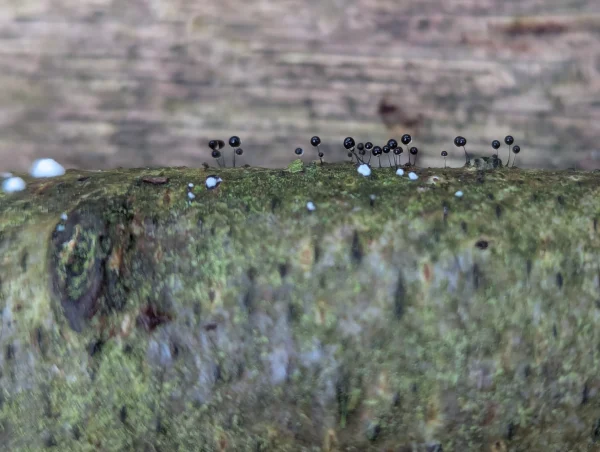
We’ve been keeping an eye out on a promising sectioned trunk near The Outpost – on the side were some clusters of immature, globular, white Stemonitis sporangia before the primordial elongation stage.
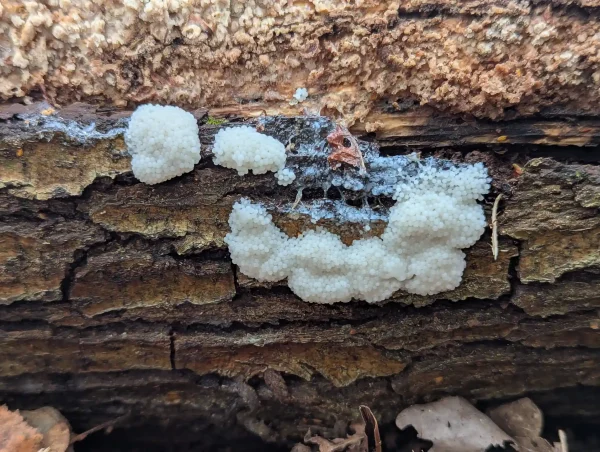
A week later primordial elongation had taken place and the sporotheca were black and fused together. The main aggregation at the bottom, having probably started out as separate aggregations, had formed into four distinct clumps and were still moist and glistening whereas the two clumps at the top were dry and matt black.
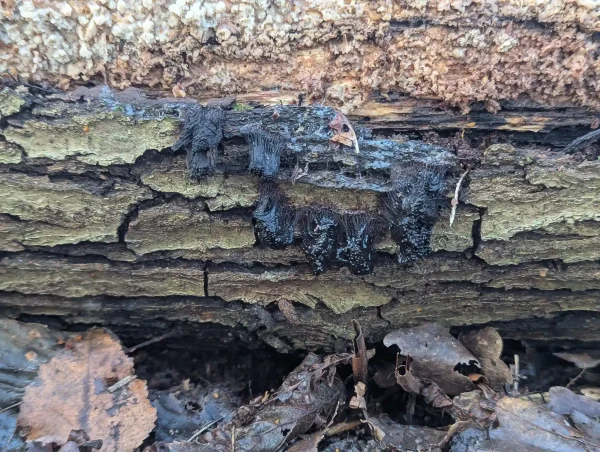
On this log opposite The Outpost, I spotted some delicate early forms of Ceratiomyxa fruticulosa.
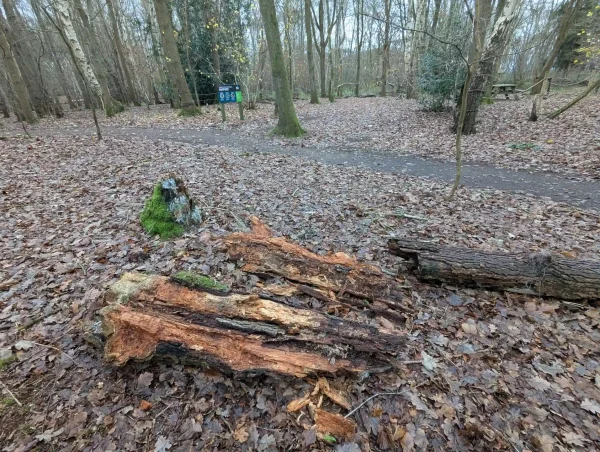
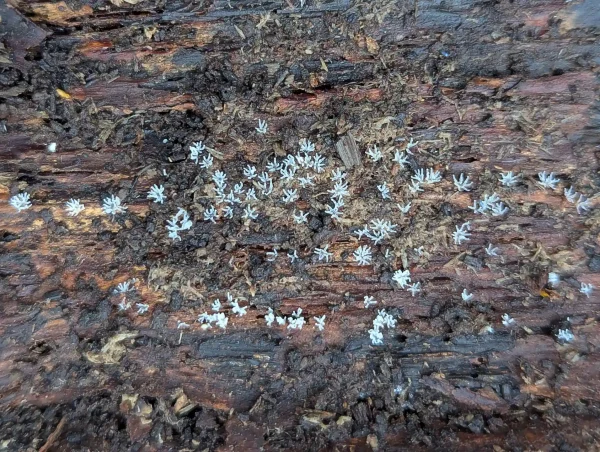
Also near The Outpost, on what we now call the Badhamia trunk, the broken off section was colonised with numerous groups of Hemitrichia sporangia – likely calyculata – at varying stages of development.
The photo below shows a multitude of dehisced (split open) sporotheca with exposed spore masses.
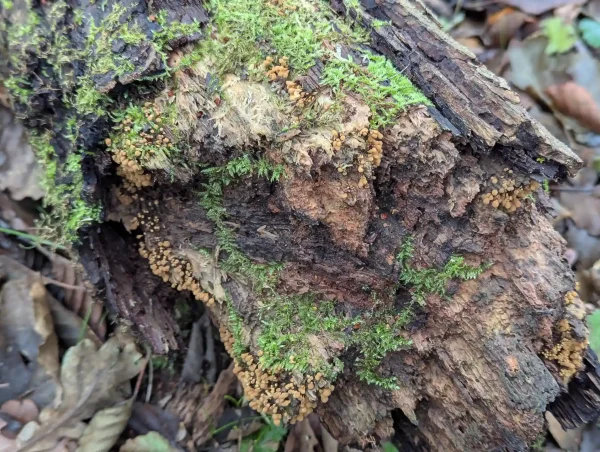
This next photo shows some dehisced sporotheca with the classic candyfloss spore mass and other maturing sporangia.
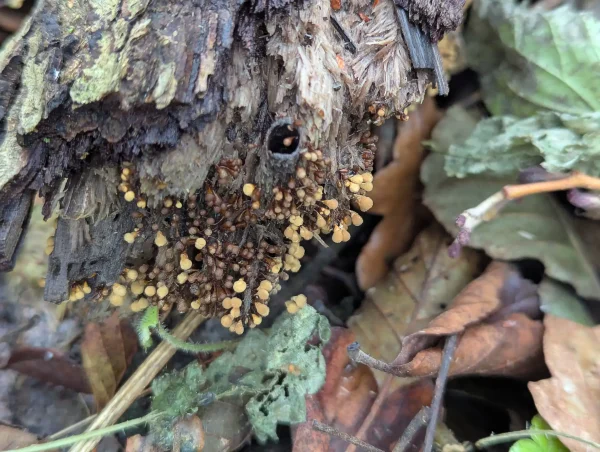
In the following photo many of the sporotheca – the ones with the buff-yellow caps – look like they are about to erupt the spore mass.
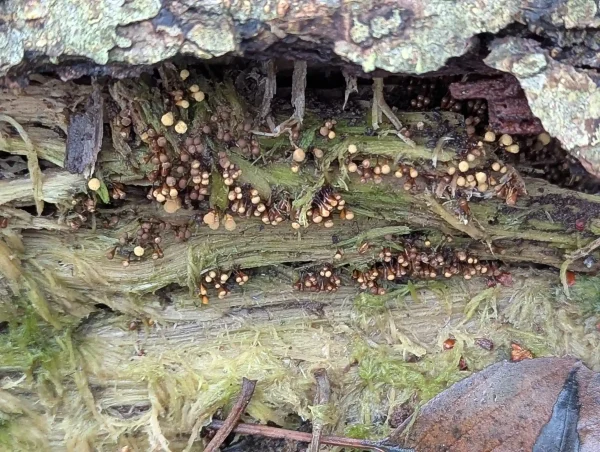
More candyfloss spore masses in the photo below.
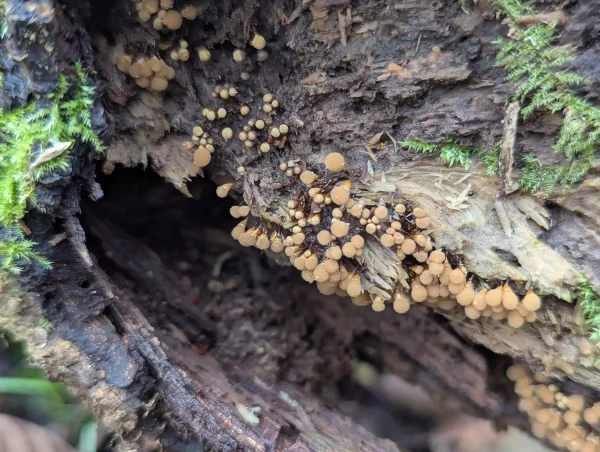
Near the end of the Woodland Trail, on some of the trunks along the path edge, I spotted crowded sporangia groups that are likely Trichia varia.
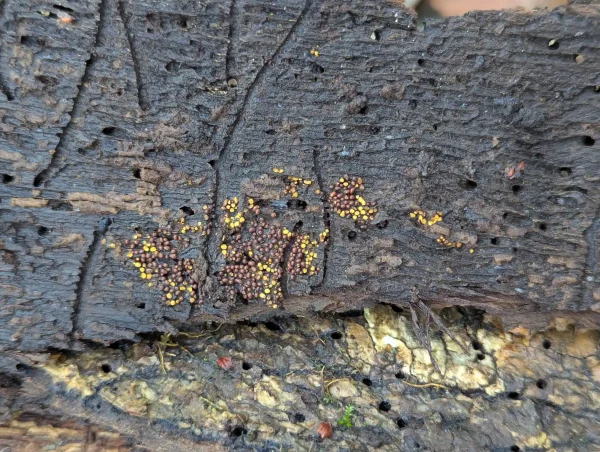
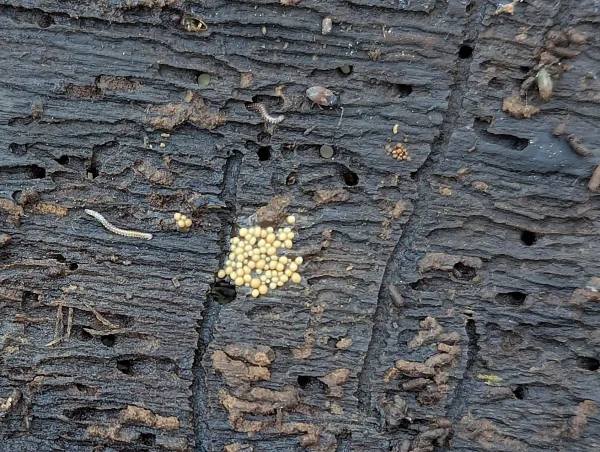
This was an exciting find – the photo below shows two plasmodiocarp (tubular) sporangia forms that I had not seen before!
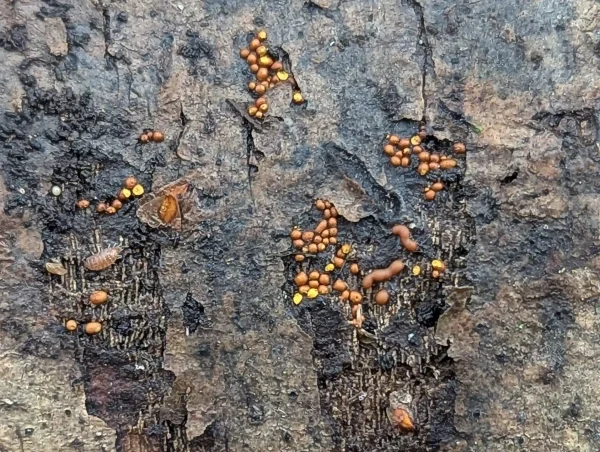
28th December 2024
At the end of the drainage channel path after the Gnarly Oak, I found some cream, clay-pink and more mature black sporangia, likely Comatricha nigra.
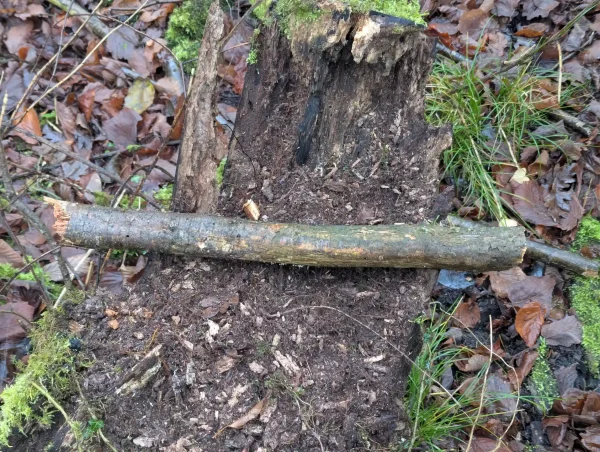
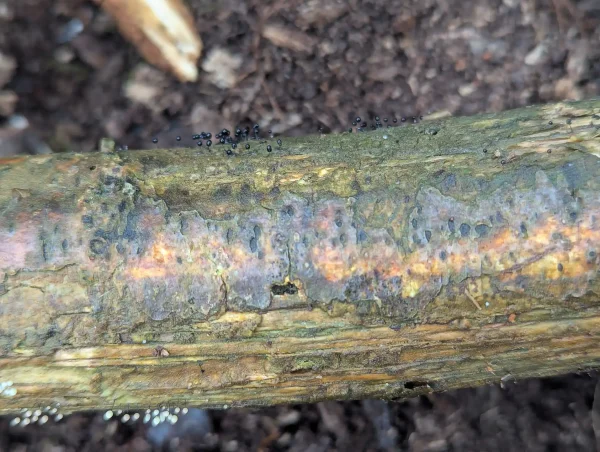
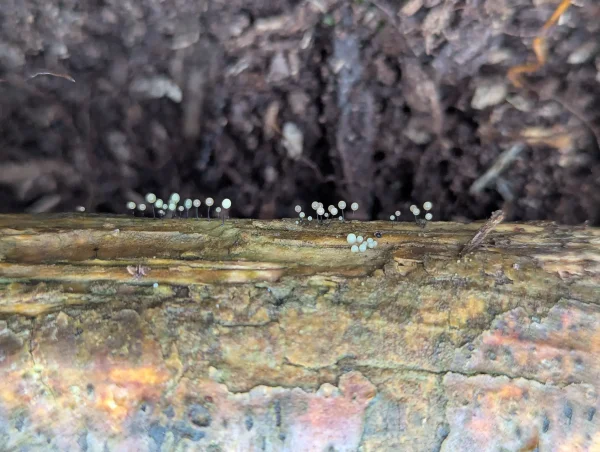
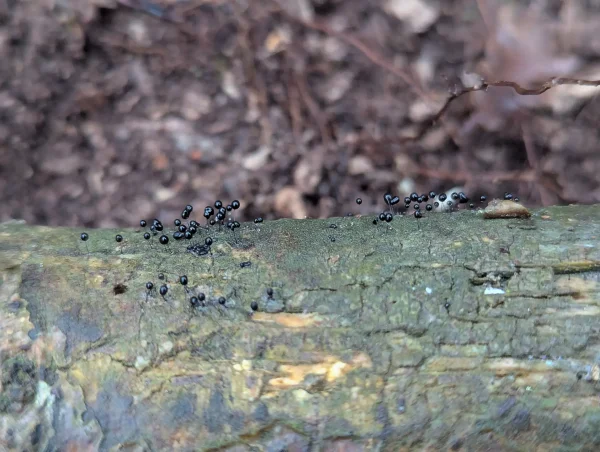
More sporotheca encapsulated in water droplets below – note the the two on the right trapped in the same droplet.
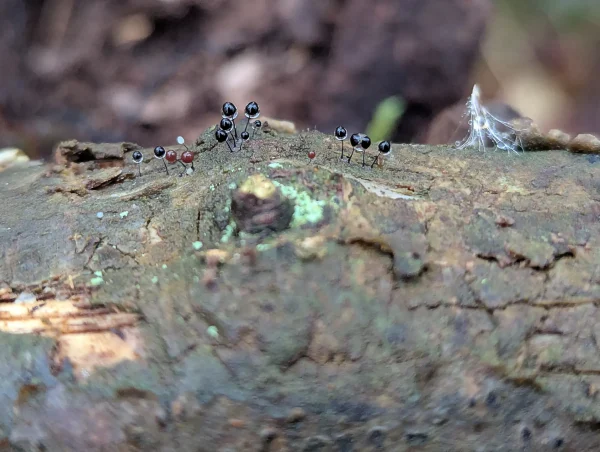
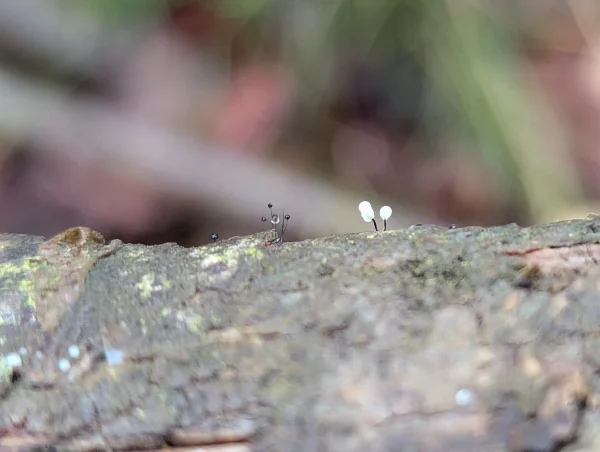
On the same branch were some other sporangia, most likely Physarum album.
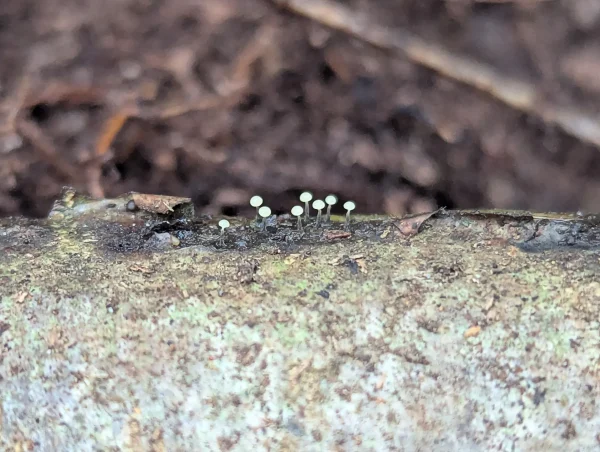
At the end of the Woodland Trail I spotted the classic orange sporangia of Hemitrichia decipiens with translucent white stalks.
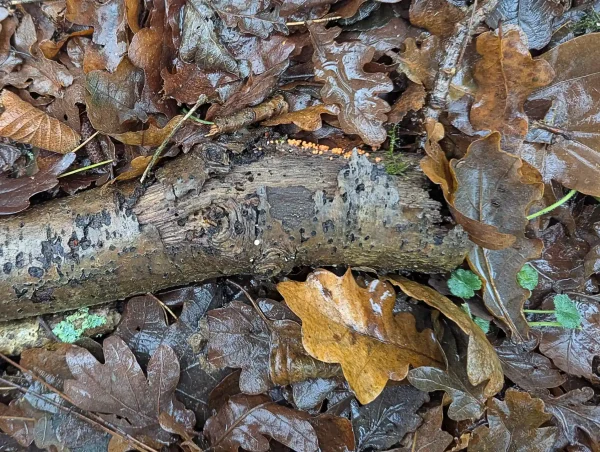
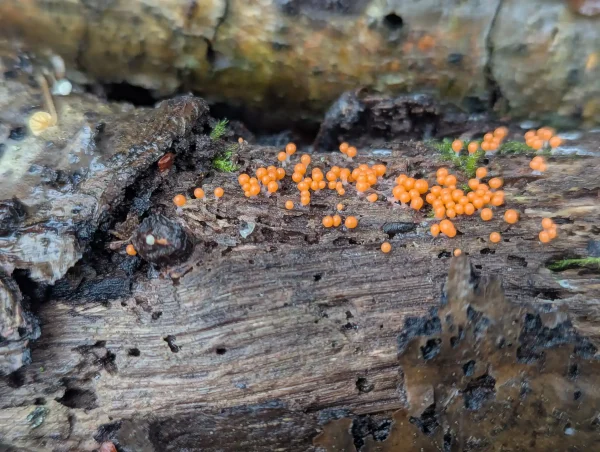
A week later there had been a frost and many of the sporangia were embedded in frost (the greyish-brown ones) and some other sporangia – ones not so developed – retained a hint of orange (the orange-brown ones).
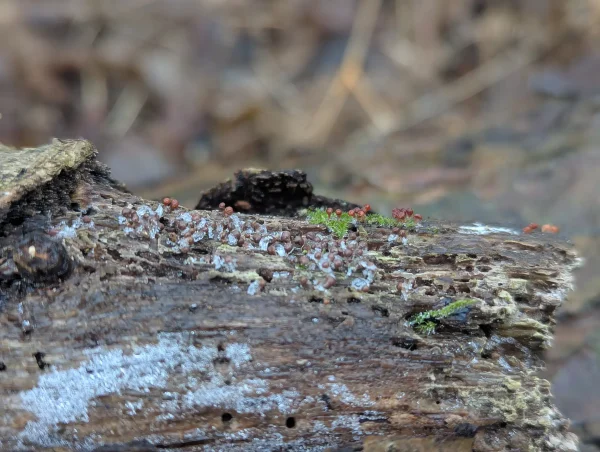
Towards the end of January, the sporotheca of the greyish-brown sporangia had dehisced revealing olivaceous-buff spore masses, whereas the less developed sporangia were mostly black and had yet to dehisce.

4th January 2025
Towards the end of the Woodland Trail I spotted some white sporangia – likely Physarum album – adorned with droplets of water.

And next them, a group of more mature, greyish-blue sporangia also likely Physarum album.
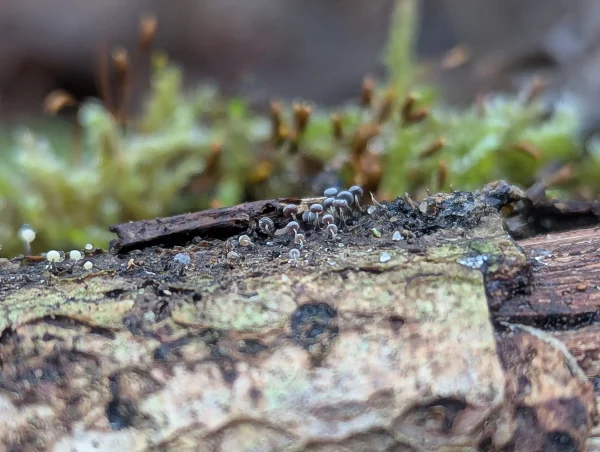
26th January 2025
At the end of the drainage channel path after the Gnarly Oak, I discovered these globular sporotheca on black stalks – likely Comatricha nigra.
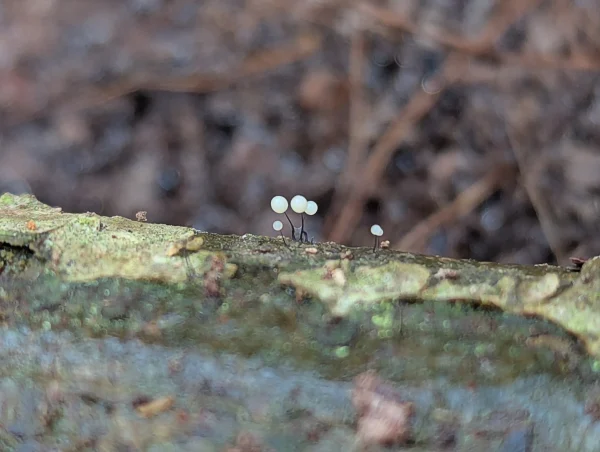
Strumpshaw Fen is a nature reserve managed by the RSPB adjacent the River Yare, east of Norwich in Norfolk
RSPB Strumpshaw Fen webpage RSPB Strumpshaw Fen Wikipedia entry